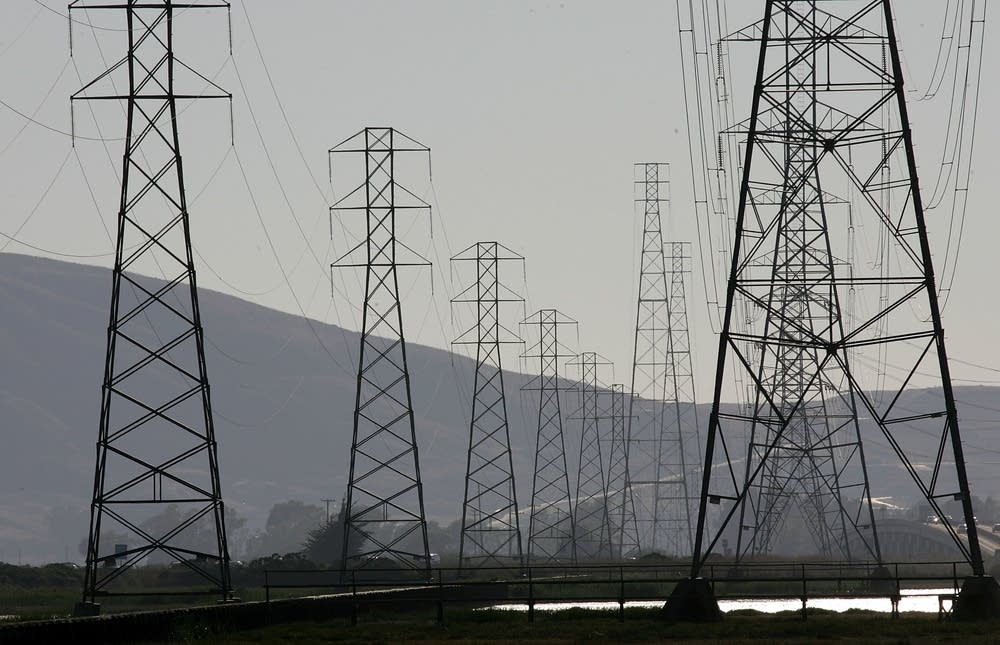
…M&A, Capital Efficiency…and Hopefully Public Support…
The success of the Biden energy policy depends on the ability of utility companies to fund a significant amount of capex in the near term.
Public discussion has largely focused on the push for expanded use of renewable energy and the related investment required to bring those energy sources online. Regulatory Research Associates, a group within the S&P Global Market Intelligence, estimates renewable spending in 2019 surpassed $19 billion, and despite a cool in activity, will remain near $15 billion.
Changes in Power Generation Mix
This type of renewable investment will ultimately shift the generation mix by 2030: wind and solar will account for 25% to 30% of power compared to roughly 14% on the grid today. Coal and natural gas, which are the two largest sources of power today at 61%, will drop to 40% to 48% by 2030. While the coal decline is well documented (and equally pushed for by many clean energy advocates), the drop in natural gas from nearly 36% to 30% to 32% is more surprising. Yet the drop can easily be explained by the increased investment directed to renewables which, in constrained capital markets, equates to a declining investment in natural gas infrastructure…though some energy experts are already advocating that gas is both clean or, at least clean enough, and more affordable to justify a shift in capital allocation back to gas.
Transmission and Distribution Costs
The shift in generation mix creates a ‘grid issue.’ The variety and variable nature of power sources estimated by 2030 will force substantial investment by utilities into transmission and distribution, including energy storage and smart grid technologies. Regulatory Research Associates accordingly forecast utilities to spend $67 billion in 2023 (compared to an estimated $65 billion in 2022).
The transmission and distribution capital expenditure will not be equally spread among corporate utilities or by region of the country. Although federal policies and acts, such as the Inflation Reduction Act (IRA), provide a range of incentives for investment, they do not necessarily stipulate the policies and parameters by which states must incorporate those incentives.
States unsurprisingly have different goals. New York and California want to generate 60% and 70% of energy respectively from renewables by 2030 and be 100% carbon free by 2040 while Texas and Iowa want 10,000 MW and 105 MW of installed capacity by 2025 from renewables. Utilities in NY and California consequently will have to fund more aggressive capital expenditure programs (as compared to those utilities in Texas and Iowa) to improve the reliability and resiliency of local grids today with the quick changes in generation mixes.
Capital Flows and Capital Efficiency
Faced with such plans and rising interest rates, utility companies are conducting strategic reviews of their assets and capex plans with unfortunately only two options in the short term (if rates stay where they are today). Multiple utilities have pursued the first option of selling minority (or full) interests in assets. ConEd’s $6.8 billion divestiture of its unregulated subsidiary, Con Edison Clean Energy Business, to fund capex at its regulated New York utility business is a perfect example. The price paid for ConEd’s renewable portfolio will continue to inspire others to pursue this route, especially with the assortment of investors focused on building renewable platforms.
Other utilities have pursued the option of selling interest in their regulated utilities. Pacific Gas & Electric (PG&E) wants to transfer 5.6GW of non-nuclear generating assets to a new subsidiary and then sell a 49.9% stake. The sale faces pushback from different Californian parties focused on ensuring the “public interest” is protected…a defeat at the hand of consumer watchdog groups, such as Public Citizen, would suggest an increase in focus by corporate utilities on the sale of interests in renewables (as compared to regulated utility subsidiaries). Duke Energy did previously sell a minority interest in Duke Energy Indiana to Singapore’s sovereign wealth fund, GIC…however Duke Energy is now working to divest wind and solar farms in Texas, Utah, and Wyoming. The strategies will obviously vary by the existing make-up of each corporate utility’s portfolio.
If the divestitures fail or do not generate sufficient proceeds, then the second option may be more comprehensive balance sheet and capital optimization efforts. Utility companies will reassess project planning – altering the scheduling of projects with corresponding adjustments in investment and capital expenditures. These decisions nevertheless will be driven by federal and state policies encouraging investment in renewable energy and theoretically providing the best return via tax credits and benefits. However, where that return math is not correct, some companies may have to elect for cheaper options like gas with better returns.
Federal policy and war may underpin the societal push to accelerate renewable energy investment. But the reality of investment capex requirements coupled with unexpectedly higher borrowing rates places pressure on corporate utilities who must confront regulatory restrictions on inputs, such as pricing, yet assume the blame for failures in the overall energy system and grid. New renewable energy sources are further away from load centers, are more variable in generation (such as wind and solar which depends on uncontrollable weather factors), and must correspond to human usage of energy that is also changing as more people work from home and change cities. Additionally, existing infrastructure, for example with gas utilities, needs to be upgraded in the near term. All these factors suggest policymakers turn their attention to corporate utilities to ensure investors (and capital) flow to these companies…or the energy transition timeline set by some policymakers may be more imagination than reality.
